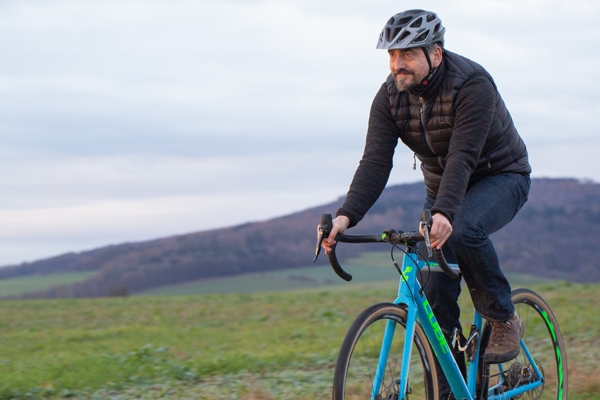
Cold, wet, snow: 5 steps to a winter-proof bike
Share blog article:
Icy temperatures, wet, dirty or snow-covered paths and salt on the roads: If you cycle regularly in winter, you should give your bike an extra dose of attention before the cold months arrive. With these 5 tips, you can prepare your bike for winter so that you get through salt, wet, ice and snow safely and undamaged.
1. Start clean with a basic cleaning
To prevent salt and dirt from sticking to your bike frame and other parts, you should give your bike a thorough clean before winter. The best way to do this is to use a mild bike cleaner, which can simply be washed off gently after a short period. An old toothbrush is also very suitable for cleaning tricky corners and tight angles such as the drive unit.
2. Check the maintenance status
In wintry weather and road conditions, many parts of the bike are subject to particularly heavy wear. Therefore, before the first onset of winter, it is a good time to check all wearing parts and replace them if necessary. Are the spokes tight? Do the tyres have enough tread? Are the bearings running smoothly? Are the chain and sprockets still in good condition? Or do parts of the brake system need to be replaced? Do you have no idea about bike parts or simply no time to check and repair everything yourself? Then it's worth arranging an inspection appointment with your trusted bike dealer.
3. Lubricating and oiling
To protect moving parts from moisture and road salt, open bearings on the hub, bottom bracket and headset must be lubricated regularly. If present, briefly immerse the suspension fork, dropper post and rear shock after applying a little of the oil recommended by the manufacturer to the previously cleaned seals. Even on bikes with closed bearings, a little oil does no harm as it also protects the seals from salt and moisture.
4. Cables, drive and gears
The drivetrain and gear components must also be oiled again after cleaning. You can simply wipe externally routed cables with a cloth soaked in oil to protect them from moisture. Internally routed cables are protected anyway and do not require any special maintenance. Finally, prepare all moving parts and joints on the front derailleur and rear derailleur for winter use with a little oil.
5. Lubricating the chain
Which chain oil is the right one is almost a religious question among cyclists. In winter temperatures, synthetic lubricants are particularly well suited to withstand wet and cold conditions. This is because they spread particularly well on and between the chain links and adhere well. When lubricating the chain, be careful not to operate the crank too quickly so that no oil gets onto the brake system. Then wipe off any excess oil with a soft cloth - done!
Also: Don't forget the lighting!
In winter, it is almost impossible to avoid travelling at dusk or in the dark. Functioning bike lights and reflective elements on your bike and clothing are therefore particularly important so that you can be seen in traffic. Therefore, regularly check whether your bike lights are intact and, if in doubt, invest in a new lighting system.
Also important in winter: Stay alert!
Have you prepared your bike for winter with our tips? Great! However, depending on how often you use it, you should regularly check whether individual maintenance steps need to be repeated or wearing parts need to be replaced. By the way: If your next bike is a Bikeleasing service bike, you can book our Bikeleasing wear and tear insurance at the same time so that you don't have to pay for wear and tear damage yourself.
That sounds good, but you don't actually want a new bike until spring? We've put together five reasons for leasing a company bike in winter.



